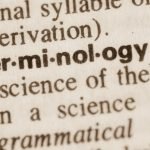Parkinson’s Disease: Getting to the Root Causes
Naturopathic Perspective
Greg Eckel, ND, LAc
In 1817, James Parkinson published an essay on The Shaking Palsy. In 1911, levodopa was first synthesized by Casimir Funk, though it didn’t enter into clinical practice until 1967. The first large study on its positive effects in people with Parkinson’s disease was published in 1968.
Fast-forward to present day and not much has changed in the treatment or diagnosis of Parkinson’s disease. Sure, we now have surgical interventions for patients that are no longer responsive to pharmacological treatments, though the advances have been dismal, at best.
I propose what I call a FAN-C approach to helping people with Parkinson’s disease. The F stands for Functional Medicine – how we treat whole, dynamic, heart-centered beings moving through time and space. (Yes, for you purists, naturopathic medicine was the original inspiration for this approach, though it’s time we joined the party). A is for Assessment: Over the last 2 decades of practice (since 2001), I have found that the customary work-up for people with this diagnosis is inadequate and incomplete. N is for Nerve: From superfoods to supplements, there is a growing list of impactful nutrients that are critical to the health and function of the brain and nervous system. And, finally, the C in FAN-C stands for Cell – specifically regenerative medicine and the amazing potential of stem cell therapies.
In this article, we will focus in on the assessment portion of the case work-up and shed some light on possible directions to go in support of patients with this diagnosis. Only addressing the end-stage of the disease process in Parkinson’s, ie, the destruction of the substantia nigra and the cells that produce dopamine, is woefully inadequate and, in my opinion, way to late in the disease progression!
I recommend a comprehensive neurological work up and will provide the reasoning behind it. This type of assessment is crucial for creating a comprehensive treatment program to aid in increasing the quality of life in those suffering from this chronic neurological disease.
Identify Contributing Factors
The proper assessment will determine the treatment path. The following components comprise the backbone of our treatment plans at Nature Cures Clinic in Portland, OR:
- Blood work
- Viral panels (molecular mimicry)
- Heavy metal testing
- Autoantibody testing
- Gut health testing
Metabolic & Nutrient Imbalances
For blood work, I recommend a regular complete blood count (CBC) with a differential, a comprehensive metabolic panel (CMP), iron panels, and thyroid tests. Of note, in the CBC, I focus mostly on the MCV result, which should ideally be below 92 for optimum vitamin B12 utilization.1 If you suspect B12 deficiency, you should still measure serum B12 and methylmalonic acid.
Viral Molecular Mimicry
Molecular mimicry is the concept of pathogenic molecules mimicking one’s own peptides, thereby triggering an immune system response that may result in an autoimmune attack on host tissues. When researching various conditions, I encourage you to check this out in PubMed searches; you may be surprised by the research out there on the topic. Molecular mimicry can be expanded beyond amino acid sequences to include microRNA and proteomic effects that are either pathogenic or salutogenic (beneficial) in regard to Parkinson’s disease, Alzheimer’s disease, and other neurodegenerative disorders.
Some data suggest a role of the immune system in Parkinson’s disease pathogenesis, also that herpes simplex virus-1 (HSV-1) infections may promote progression of the disease.2 Cross-reactivity between alpha-synuclein (a pre-synaptic protein) and HSV has come to light in some recent research as another possible contributory factor.2
To assess for viral molecular mimicry, I will typically run a panel including Epstein Barr virus (EBV), cytomegalovirus (CMV) (IgG/M), and HSV-1 and -2, and I will treat according to titer results.
Heavy Metal Toxicity
With all chronic neurodegenerative conditions, heavy metals should be ruled in or out. I learned this the hard way. I recall Dr David Perlmutter presenting a case video of a gentleman with the common Parkinson’s disease shuffle gait. He gave this patient a push of glutathione, and the patient’s gait became remarkably smooth and elongated. I started using this treatment with my Parkinson’s patients. Only one big difference: I wasn’t seeing any results in my patients. What I eventually discovered was that the patients for whom glutathione didn’t work had a heavy metal burden. Specifically, I’ve found arsenic, cadmium, lead, and mercury to be the most common metals affecting them.
I believe that proper training is essential for any practitioner wanting to assess heavy metals. To properly evaluate patients, I recommend that you have them do an unprovoked morning void, then come into your office for a provoked challenge test. Pre-challenge testing gives you information that is comparable to that of the National Health and Nutrition Health Survey (NHANES). This also allows you to rule out any acute exposures.
A post-challenge level that is 5-10 times above the pre-challenge level – or a pre-challenge level that is significantly elevated, ie, above 75% in NHANES – is significant and actionable. Do not use the laboratory’s “normal” levels as a guide. In order to have a true understanding of the metal levels in your patients, it’s important to compare the pre-challenge levels to both the post-challenge levels and the NHANES 75th percentile.
If the patient has an actionable level, it is imperative to decrease the body’s toxic burden by getting the metals out of the body. Once this has been achieved, we see improvements in the patient’s gait, speech, and balance. It also opens up therapeutic windows such that other therapies, like glutathione, will have a larger impact.
Neurological Autoantibodies
To rule out other possible causes of Parkinsonism symptoms, I utilize a comprehensive panel of 16 of the most-studied neurological autoantibodies. Test results can guide providers in treatment protocols by pinpointing the mechanisms behind disease progression and providing a roadmap to solutions and improved health outcomes in this challenging arena of disease.
The broad categories that are tested for include demyelination antigens, blood-brain barrier disruptors, and markers specific for optical and autonomic nervous system disorders, peripheral neuropathies, and brain autoimmunity.
Symptoms associated with autoimmunity in the nervous system include:
- Ataxia
- Sensory loss
- Neuropathies
- Impaired vision
- Photosensitivity
- Muscle pain/spasms
- Muscle weakness/atrophy
- Orthostatic hypotension
- Chronic pain/fibromyalgia
- Memory loss or brain fog
- Autoimmune disease
These symptoms are rather vague and ubiquitous. However, the diagnosis of Parkinson’s is purely a clinical one. I find the information from this testing to be helpful in differentiating neurological autoimmunity from other causes of the symptoms.
Gut Health
With Parkinson’s disease, constipation may have been the leading symptom up to 2 decades prior to diagnosis. Naturopathically addressing gut health is fundamental in our practices. I also find much commonality and overlap between naturopathic practice and the Chinese medicine focus on spleen and stomach in treating digestive imbalances.
I use what I believe to be one of the most comprehensive analyses of gut health, one that measures in stool the DNA of beneficial and pathogenic microbes. The research field is exploding with microbiome information that connects the dots and reveals the GI tract as the second brain. We’ve known this for decades in our field, but it’s nice to see the research finally catching up.
Authors of a recent review article proposed that intestinal hyperpermeability (aka leaky gut) can trigger the development of autoimmune diseases such as multiple sclerosis, or exacerbate them.3 As stated by the authors, “Growing evidence shows that the gut microbiota is important in supporting the epithelial barrier and therefore plays a key role in the regulation of environmental factors that enter the body.”
Distinctive microbiological patterns of intestinal microflora have been observed in patients with Parkinson’s disease, which the investigators believe “can trigger local inflammation followed by aggregation of α-synuclein and generation of Lewy bodies.”4
Recent research suggests that gastrointestinal microbiota and/or their byproducts are linked directly to dementia pathogenesis via the triggering of metabolic diseases and low-grade inflammation.5
For whole-person health, it is evident that addressing gut health is necessary, even for neurological issues.
Conclusion
By thoroughly evaluating the whole dynamic being and looking beyond just the end-stages of disease, we are able to effectively develop more comprehensive treatment programs for our patients and increase their quality of life. And by taking the burden off the body, we open the door for the body to heal itself through self-regulation. By using our FAN-C approach to Parkinson’s disease in our clinic, we’ve seen patients’ tremors disappear, their gaits stabilize, and their speech improve.
I covered the “A” part of the assessment in this article. This is a process you can immediately implement in your practice to help those suffering from chronic neurodegeneration.
References:
- Oosterhuis WP, Niessen RW, Bossuyt PM, et al. Diagnostic value of the mean corpuscular volume in the detection of vitamin B12 deficiency. Scand J Clin Lab Invest. 2000;60(1):9-18.
- Caggiu E, Paulus K, Galleri G, et al. Homologous HSV1 and alpha-synuclein peptides stimulate a T cell response in Parkinson’s disease. J Neuroimmunol. 2017;310:26-31.
- Mu Q, Kirby J, Reilly CM, Luo XM. Leaky Gut As a Danger Signal for Autoimmune Diseases. Front Immunol. 2017;8:598.
- Petrov VA, Saltykova IV, Zhukova IA, et al. Analysis of Gut Microbiota in Patients with Parkinson’s Disease. Bull Exp Biol Med. 2017;162(6):734-737.
- Alkasir R, Li J, Li X, et al. Human gut microbiota: the links with dementia development. Protein Cell. 2017;8(2):90-102.
 Greg Eckel, ND, LAc, has developed a deep and personal knowledge of chronic neurological conditions in the recent past. His wife Sarieah, passed from Creutzfeldt-Jakob disease (CJD), a condition with no known cure. As she was the love of his life, being a good husband and doctor, he set to the research to “swing for the fence.” Although unfortunately not finding a remedy for Sarieah, he uncovered Sarieah’s gifts. This deep dive led to regenerative medicine and the development of his FAN-C brain regenerative program. Dr Eckel has been in clinical practice at Nature Cures Clinic in downtown Portland, OR, since 2001.
Greg Eckel, ND, LAc, has developed a deep and personal knowledge of chronic neurological conditions in the recent past. His wife Sarieah, passed from Creutzfeldt-Jakob disease (CJD), a condition with no known cure. As she was the love of his life, being a good husband and doctor, he set to the research to “swing for the fence.” Although unfortunately not finding a remedy for Sarieah, he uncovered Sarieah’s gifts. This deep dive led to regenerative medicine and the development of his FAN-C brain regenerative program. Dr Eckel has been in clinical practice at Nature Cures Clinic in downtown Portland, OR, since 2001.









